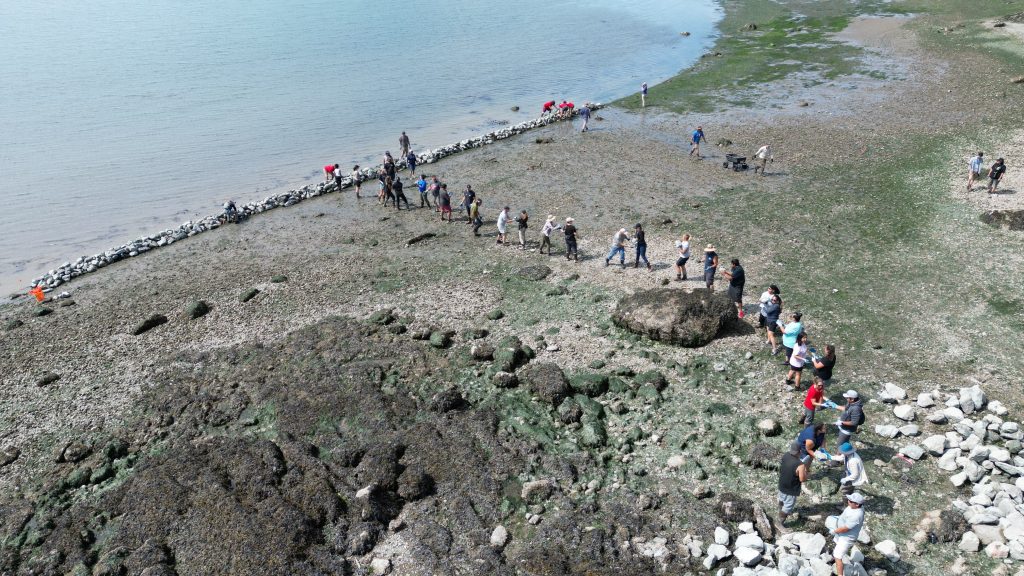Clam gardens
Reviving the Past to Protect the Future: Developing a Social-Ecological Clam Garden Site Selection Model
Researchers created a model to determine the best place to install the first present-day clam garden in the U.S.

Many helping hands lay the foundation for the Swinomish Tribe’s clam garden in August 2022.